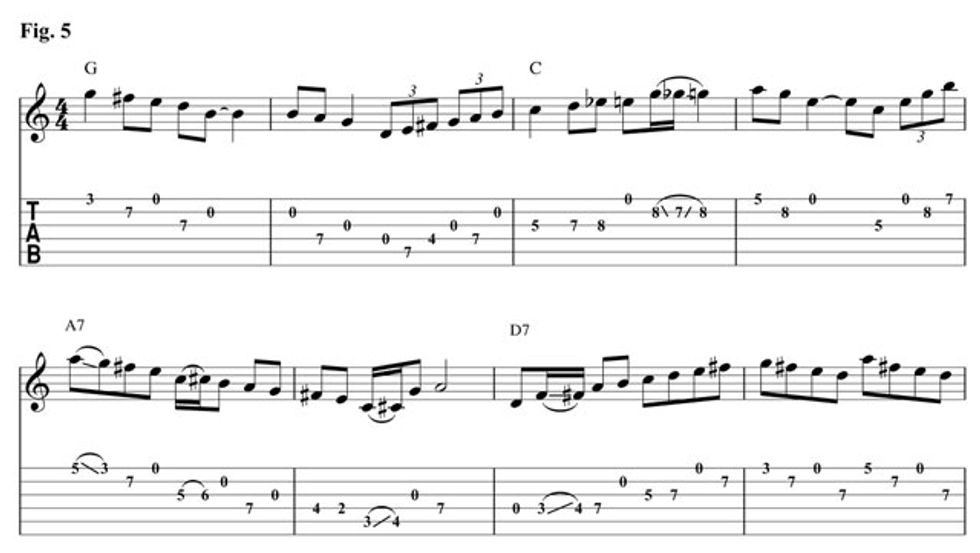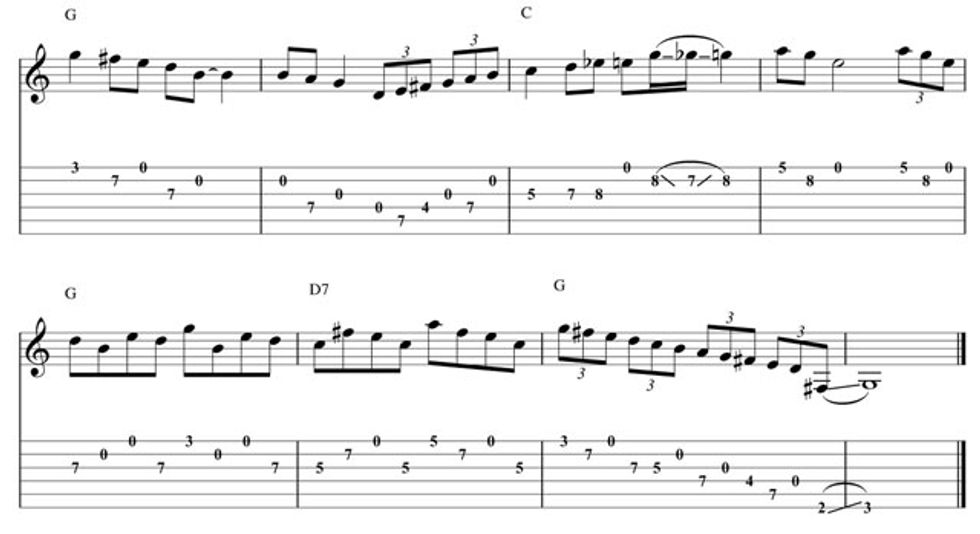| Print it! Click here to download a high-resolution, printable PDF of the notation. |
We will learn how to convert a scale you already know into a cascading scale. The sound created by doing this technique is similar to playing a scale on piano with the sustain pedal down. You get a lot of beautiful dissonance and overtones by letting each note ring into the next. Chet Atkins, Merle Travis, Jerry Reed, Albert Lee and many others use this technique. Though the concept is not strictly a country guitar technique. As we learned in October's lesson on open string licks, its application can be applied to any style. Check out some Doc Watson or Tony Rice solos to see how you can incorporate open strings into your melodies.
Fig. 1 is a C major scale. The frets that I chose will lend themselves well to the cascading effect. For this example I'm just playing it straight with nothing held so you can hear the drastic difference between this example and the next. Download example audio...

Fig. 2 is that same scale with the cascading effect. I pluck the open strings with my middle finger for more efficiency. Keep each finger down and ringing until it has to be moved to play another note. The only problem you may run into is unintentionally muting the string underneath and killing all that great dissonance. Be sure to keep the thumb placed flat and centered in the neck directly behind the middle finger. This will give you the greatest range of motion. Download example audio...

Fig. 3 is a G major scale with no cascading effect. Download example audio...

Fig. 4 is the G major scale with the cascading effect. To really assimilate it into your playing be sure to apply it to every scale you know, write solos, tunes and freely improvise. Download example audio...

In Fig. 5 it's time to put it all to use. For this etude, I'm using A Mixolydian, D Mixolydian, C major, and G major cascading scales. It's written in the style of Chet Atkins. Download example audio...


 Jason Loughlin has performed with Amos Lee, Rachael Yamagata, James Burton, Mike Viola, Nellie Mckay, Phil Roy, Marshall Crenshaw, Sara Bareillies, Lesley Gore, Ben Arnold and John Francis to name a few. Jason lives in Williamsburg, Brooklyn performing and teaching. Look out for his new record, Peach Crate, released in February. For other info be sure to check his website jasonloughlin.com
Jason Loughlin has performed with Amos Lee, Rachael Yamagata, James Burton, Mike Viola, Nellie Mckay, Phil Roy, Marshall Crenshaw, Sara Bareillies, Lesley Gore, Ben Arnold and John Francis to name a few. Jason lives in Williamsburg, Brooklyn performing and teaching. Look out for his new record, Peach Crate, released in February. For other info be sure to check his website jasonloughlin.com
















